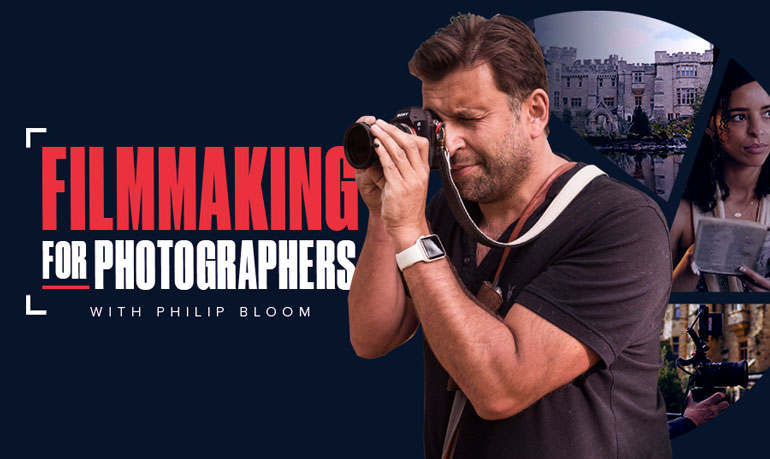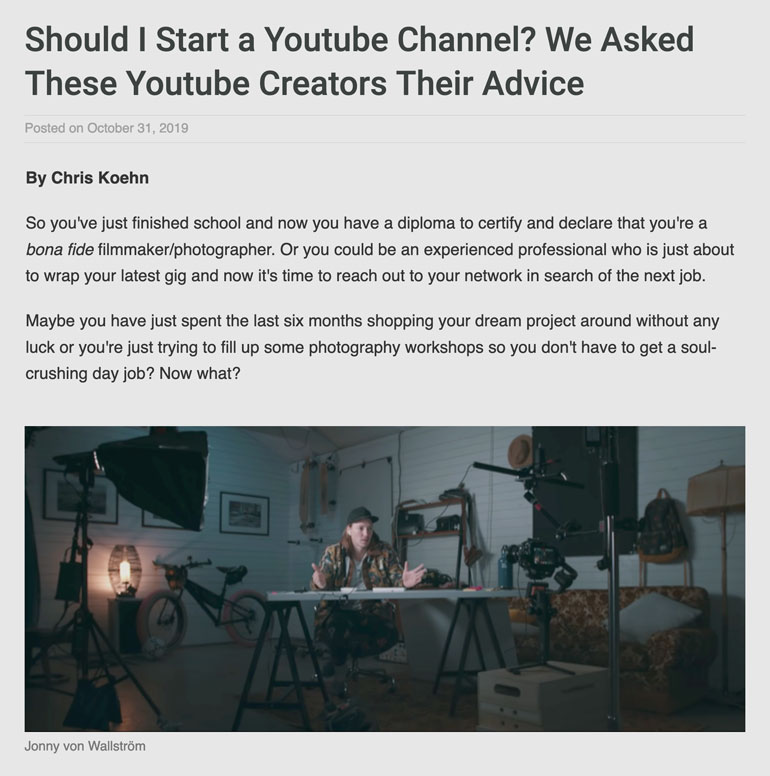Philip Bloom’s New Masterclass – Filmmaking for Photographers Review
Philip Bloom's Filmmaking for Photographers course on MZed
Why would anyone want to pay for online learning when there is so much free stuff on YouTube?
Lately my friends and I have been discussing this quite a bit, and I’m sure you’ve had the same debate with yourself or your friends or colleagues as well. The quality of YouTube educational content is so good these days, rivaling many of the paid courses out there, especially with filmmaking videos. Many educators end up having a mix of both free content on YouTube as well as paid courses offered somewhere else, so the difference between free and paid becomes even more murky.
Case in point, I recently had the opportunity to take Philip Bloom’s Filmmaking for Photographers course from MZed.com. Bloom himself offers a ton of free educational content in the form of reviews and commentary on his own channel. And yet, the course is on a completely different level than his free content.
play
Maybe it’s that the course took a year to make, with a full crew and set, whereas most YouTube videos prioritize weekly releases that are often produced, filmed, and hosted by a crew of one. Or maybe it’s just that the capacity of a course is inherently different from a __ YouTube video. A series of video lessons in an 8-hour course creates deep connections within your brain as you’re watching and taking it all in, versus a YouTube playlist that gathers up a few scattered videos in the hopes of stitching together a theme.
Even if you come to disagree with my thoughts on online learning, I hope you’ll at least find this piece valuable in helping you decide if Filmmaking for Photographers is a course worthy of your attention.
__
Full disclosure: I currently subscribe to MZed Pro from my own funds, but I was provided with access to Filmmaking for Photographers for review, though I am free to offer my honest opinion.
Who is This Course For?
As a photographer who transitioned to video, I’d like to explain why I wish “Filmmaking for Photographers” existed 15 years ago. But first, I’ll be straight up: I’m a fan of Philip Bloom’s work and I was very excited to see this latest offering of his after years of devouring his videos and written articles. I also recently watched his Cinematic Masterclass, which is also hosted by MZed.
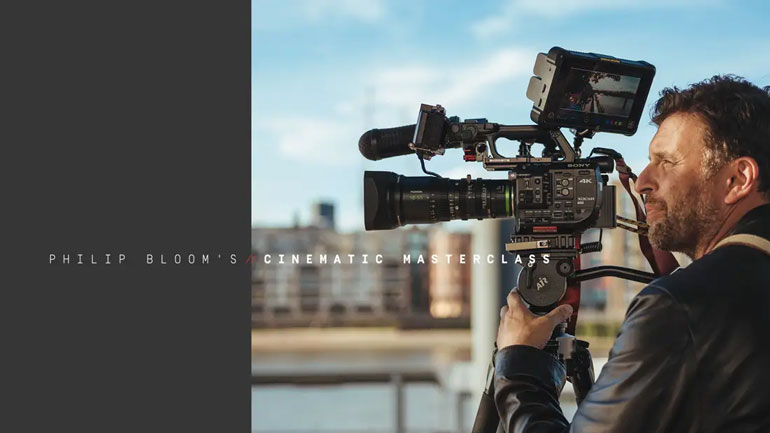
So I’m already interested in Bloom’s educational content and probably would have taken this course even if it was called something completely different, like “Photography for Videographers.” But who is this course really for? Is it only for photographers?
Ok so say you’re a photographer who has been asked by a client to provide video services. It’s not something you normally offer, but you have some quality gear and all you need to do is flip your camera’s command dial over to video, right? For most of us, we soon learn it’s not quite that simple!
Maybe you just want to use video to market your business in a new way, to expand your reach or create an audience for your work, but you don’t know how to get the best out of your kit? Maybe starting a Youtube channel is in your cards?
(If you want to read a long, in-depth article on this subject, I recently spoke to a handful of popular filmmakers and photographers who use YouTube to grow their creative businesses:Should I Start a Youtube Channel?)
Or maybe you just need a creative boost, a reminder of the powerful scenes you can craft with gear you most likely already have?
There are countless other reasons you might want to watch this course, but at its core, “Filmmaking for Photographers” is for anyone who wants to improve their filmmaking skills. The class assumes you understand basic camera operation, but even if you’re an absolute beginner, the concepts in this course will get you moving toward shooting your first film.
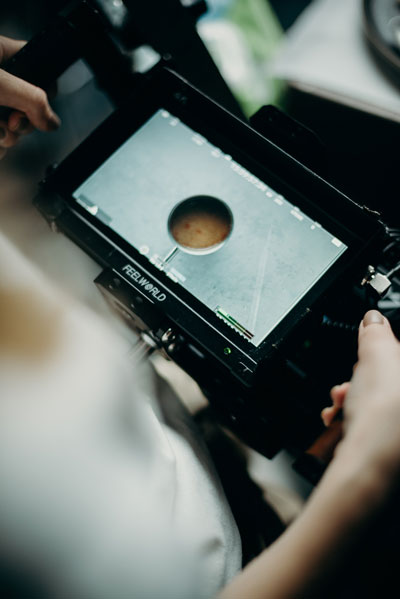
On the other side of the coin, there are many YouTubers who will give you their top 10 filmmaking hacks for free on their channel.
If over-cranked coffee “b-roll” is your thing and that’s all you’re seeking to do with filmmaking, then sure. There’s certainly a place for that on the Internet, but in the real world there’s way more to filmmaking than a few pretty seconds of footage over royalty-free music beds.
But let’s be fair, you can find almost anything you want about any subject on YouTube, including long form filmmaking tutorials and thorough how-to guides. So why pay for expensive online learning?
Assuming you don’t have time to consume everything out there, it all boils down to getting an effective education in exchange for your limited time and investment, rather than simply consuming endless amounts of content.
Online Filmmaking courses costs and discounts
Online learning isn’t really that expensive if you break it down to a monthly, or even daily cost. Most learning comes with a subscription as well, so you’re actually getting more than a single course. With some subscriptions comes a discount on newer content, as is the case with Filmmaking for Photographers on MZed Pro. You can pay for just the course, or add it to your subscription for a discounted price. A full subscription to sites like MZed and Masterclass is under a buck a day.
Right now there are over 30 courses available to MZed Pro members, which adds up to under $10 a course, or about $1 per hour of content. They also offer offline viewing with their iOS app, which makes it convenient if you want to watch the courses while you're traveling or somewhere without wifi.

It might be hard to swallow a couple of hundred bucks all at once for an annual subscription, but breaking it down per course, per lesson, or per day changes the argument. That's in addition to the lifelong value of whatever you learn. The fact that you’re reading this at all means that education is something you consider important. A course from Masterclass, MZed, Lynda, or Linkedin Learning, among others, has been vetted and produced by professionals.
You’re going to learn something , and paying for the course gives you enough skin in the game to pay full attention to the course, which is more conducive to learning than second-screening YouTube videos. And if you truly don’t enjoy the course or subscription, most providers offer a money back guarantee, as long as you stay within their terms of agreement.
Genuine filmmaking Experience Outside of Youtube
It’s quite obvious Philip Bloom is talented. He employs his skills with story, visuals, and an innate ability to teach in all his videos. Check out his channel. He’s not a YouTuber, rather he’s a filmmaker with a YouTube channel, and the difference in his gear reviews set him apart from most of what’s out there. You won’t get a talking head video with a simple reading of a spec sheet on his channel. Consider his recent Sony FX9 review for proof, which is nearly two hours long and is maybe the most comprehensive camera review out there.
Unfortunately, it will take time and experience in filmmaking before you can tell which YouTubers are worth watching. Alternatively, you can skip past all that and trust a professional who has worked with a reputable organization to produce something of quality.
Check out CNN’s The Wonder List, a travelogue series that follows journalist Bill Weir around the world. Philip Bloom was the cinematographer for the first two seasons and brought his cinematic flair (and drones) to mainstream TV audiences. There is also his work on feature films, and years as a video journalist under his belt.

Learning Filmmaking vs. Picking up Tips
This is a recurring theme with online learning. Sometimes all you need is a quick video on how to do a certain graphical flourish in your edit suite, so off to YouTube to help you out. No doubt someone has shared their quick how-to video on the subject already, so you watch it, implement your newfound skill, and move on. Great! This is what YouTube excels at.
But when you want to really dig into a topic, you’re often assaulted with overdone, attention grabbing thumbnails that declare a vast sea of topical solutions to your lack of expertise in a field. Others do a better job of organizing these videos into playlists that may help, but there’s a lot of wading through the unrelated stuff before you land where you want to be.
Bloom’s course is pretty straightforward in what it offers and to whom it’s targeted. Filmmaking for Photographers explains what you’ll get in the course outline. Try going through everything in his course description and collecting all of those videos in YouTube and you’re going to spend hours deciding what’s worth it and what’s not. Your time is money.
You're More likely to finish what you started
If you’re anything like me, you probably have a healthy “Watch Later” playlist full of DIY, how-to’s, tutorials, and other educational videos that took ages to curate. Some creators are more focused than others and offer a decent path to understanding complex subjects, while others offer some insight on niche areas. My point is, this gets so overwhelming and I rarely go back to finish everything I save for later.
Since I paid for MZed, Masterclass, and others, I’ve been motivated to go through the content and finish it. If I let my subscription lapse, I lose access. There’s a motivating force here to see you through this content that you deemed important enough to your career to shell out a few bucks for.
As I mentioned before, it’s called skin in the game and it really does work to motivate you. It’s why you’re likely to go to your college classes, even if you hate them, because you paid a lot of money for them.
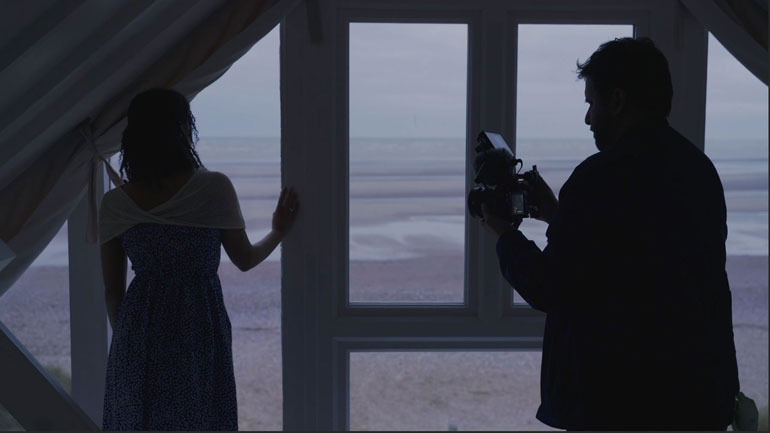
Professional Editorial oversight Matters
I know this is something of an appeal to authority, but if a course is hosted by a reputable learning brand, it has likely been vetted, edited, and produced with quality, accuracy, and value in mind. This form of editorial oversight does not necessarily exist on YouTube, though there are many channels that maintain a high degree of expertise and quality in their subject matter.
My point is, you can feel somewhat assured that what you’re getting is a quality product and not a paid commercial or outright misinformation. You often get what you pay for and it takes a lot of time and understanding of the subject to weed out the countless well-produced videos that don’t really offer much in the way of learning.
None of the above should be taken to prove that YouTube is a waste of time. Many passionate, well-informed creators have made an effort to help the rest of us out by sharing their knowledge and experiences with us, and for that I’m grateful. In fact, a lot of them have had their own courses produced by popular learning portals or available on their own websites. Throw them a bone, or a few bucks, and check out their content. It really helps them keep making the stuff we love, and lets them pay the rent!
PHILIP BLOOM FILMMAKING FOR PHOTOGRAPHERS REVIEW
Still with me? Great! Let’s talk about the course itself.
As I mentioned above, the title says it all. If you’re a photographer looking at doing some filmmaking, this class was made especially for you. But there’s value in this content even if you’re already skilled and experienced in filmmaking.
Bloom explains re-purposing your stills gear for filmmaking, and you can skip this if you already understand the potential of your kit, but I recommend watching the course in its entirety. There always seems to be something to learn or gather inspiration from, even if we think the material might be familiar.
For instance, Bloom shows a variety of lighting options ranging from the professional to the practical. Literally practical. One of his larger lighting sources is a household light from IKEA. Just listening to him try to pronounce the Swedish name (FLOALT) for it is worth your time. See if you can get it on your first try!
As a photographer, how often have you tried to acquire quality audio? I thought so. Bloom walks through a host of microphone options that are likely to work well with your camera and how to set them up to begin capturing good stuff. With some great examples of how the different sound systems work, you can simply pick which one you like and get to it. He even walks through some simple foley techniques (creating sound effects) for your videos. Audio need not be intimidating once you learn how the different types of mics and recording devices work in this class.
Photographers understand lighting. Strobes and continuous lighting are part of many photographer’s toolbox already. However, we can’t forget about the countless photographers out there who almost wholly rely on available light. Bloom shows how he lights a scene to match the mood of his films and demonstrates the importance of motivated lighting. The lighting section walks the viewer through numerous scenes and how the camera reacts to different color temperatures and exposure settings.
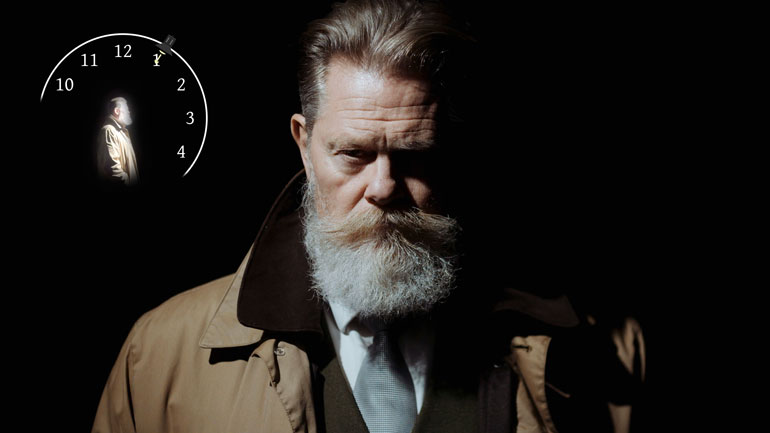
One of the best parts of this series is how Bloom demonstrates the topics he’s discussing. Anyone can make one of those TOP 10 FILMMAKING TIPS videos, but have they ever made anything besides top 10 videos? Bloom’s filmmaking advice is often accompanied by a variety of clips from his professional work, showing his advice in action.
I found the sequences chapter the most compelling. Bloom has a bit of fun showing how to take simple concepts, turn them into shots, and then organize them into the basics of a story. As an example, Bloom walks you through the vlogger’s standard - making coffee - and actually turns it into a story featuring his playful sense of humor. Using some more salient examples, Bloom explains how to take your simple idea and flesh it out with video, using skills learned from the previous modules.
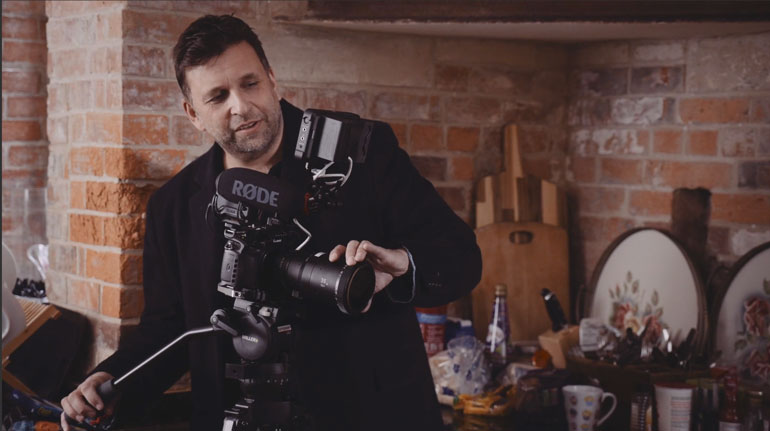
He continues the exploration into story and narrative with a longer delve into creating some promotional client content. This step-by-step lesson brings it all together, and the shorts he creates show you how to make something unique out of fairly standard commercial content.
The finale is a lengthy two hours on post-production. Here, Bloom explains his workflows, data management, clip organization, editing processes, and much more. He walks you through the task of creating a finished film, which can be especially daunting if you’re not used to wrangling terabytes of image and sound data on a video editing timeline. It’s also great if you just want to see Bloom at work.
I don’t recommend binging this course in one night. Well, if you do, at least put some time aside to revisit it! If you’re considering adding video services to your business, you really could take notes from this class and add them to the operations section of your business plan. The course flows well from understanding the potential of your gear, to using lighting and audio to create scenes, and then graduate into creating longer content.
By Chris Koehn
Chris Koehn is a former newspaper journalist turned videographer. With independent documentary and corporate video production experience, Chris helped newsrooms adopt video content strategies as media convergence and DSLR film making transformed the online news landscape.
His video work earned nominations and national news awards in Canada for elections coverage. Chris is now working in independent journalism and documentary while freelancing for Canadian news outlets.
